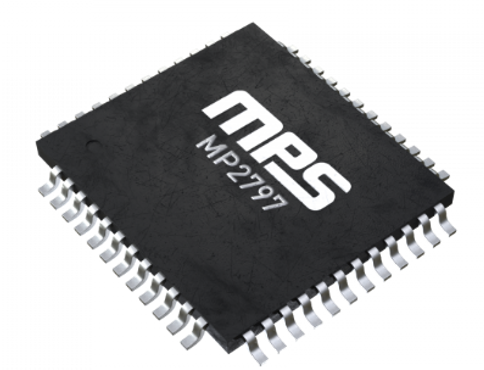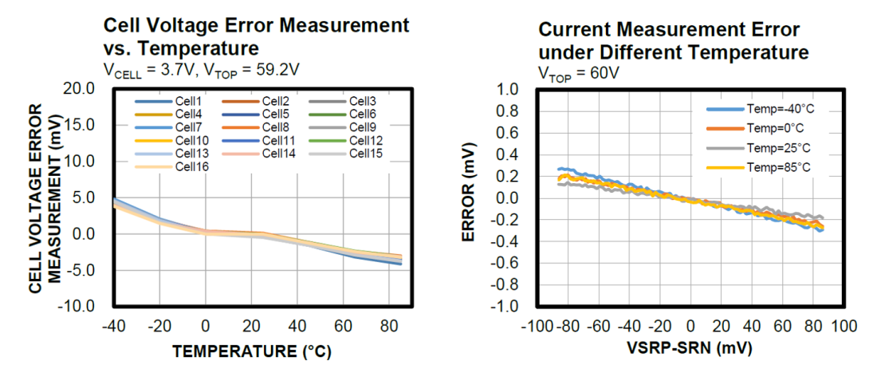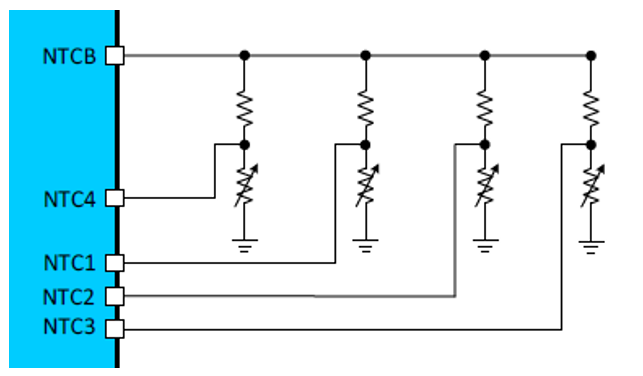模拟前端 (AFE) 监控与保护 IC 用例:锂电池电动两轮车

每月为您发送最具参考价值的行业文章
我们会保障您的隐私
本用例将介绍MP2797 在锂电池电动两轮车中的应用。
MP2797为两轮车锂电池提供完整的软硬件双重保护,以提升其安全性能。
简介
随着绿色出行方式的普及,电动两轮车正从铅酸电池向锂电池过渡。而节能减排、碳达峰等政策的推出,让电动两轮车市场显现出巨大的增长潜力,尤其是锂电池电动两轮车。
锂电池的优点
锂电池具有以下三大主要优势:
- 1. 耐用性强:锂电池的使用寿命是铅酸电池的两倍。
- 2. 提取方便:锂电池的提取过程轻巧而方便。
- 3. 环保:锂电池能量密度大,效率比铅酸电池高,续航里程则与石墨烯电池相当。
锂电池的缺点
锂电池的一些优点同时也带来潜在的风险,例如,其高能量密度和电池内部化学物质的强活性,在电池过充、过放或发生其他异常情况时,可能导致电池损坏。在极端情况下,甚至会导致火灾或爆炸。近年来,锂电池两轮车起火事故就频频发生。锂电池的另一个显著缺点是制造工艺昂贵,材料成本高。
相关内容
-
应用案例

高级电量计用例:电动自行车
MPF42791 提供了一种先进的方法来估算和管理电池组(最多 16 个电池串联)以及单个电池的充电状态 (SOC) 和健康状况 (SOH)。
-
应用案例

电源管理用例:电动自行车(E-Bike)
MPS 的 MP4581、MP27631、MIE1W0505BGLVH 和 MP5042 产品可为电源管理提供战略性解决方案,实现电动自行车系统电池寿命与可靠性的提升。
-
文章

智慧两轮出行新方案
MPS 全新推出 MPF42790 电量计方案,帮助客户实现更高精度的电池荷电状态计量。
-
参考设计

电动自行车充电器参考设计
MPSB005 是一款锂离子充电器评估板,通常用于电动交通工具应用。
锂电池的改进
对锂电池安全问题进行研究后可得出结论,过充、电池单体故障和电气线路短路是导致电动车电气火灾的根本原因。因此,配备可靠的电池管理系统(BMS)对锂电池非常重要。BMS可随时监控锂电池的电压、电流以及其他参数,从而有效降低安全风险。如果BMS监测到相关参数超过阈值,电池主电路将直接关断以保护电池组。
与其他锂电池应用相比,电动两轮车面临更严苛的安全要求,因为其应用环境更加恶劣,震动幅度更大,温度范围也更宽。此外,锂电池两轮车的充电方案往往存在问题,因为很多充电系统来自二级市场,存在很大的安全隐患。
因此,锂电池电动两轮车对BMS的保护需求更高,即更加重视BMS板的鲁棒性(Robust)。当然,成本也需要控制在可接受的范围内。
MP2797介绍
鉴于此,MPS推出了非常适应市场需求的MP2797,这是一款可从安全、成本两方面来帮助两轮车锂电池电量计监控的解决方案(见图1)。

图1: MP2797
MP2797 是一款先进的模拟前端 (AFE) 监控与保护芯片,支持 7 至 16 节串联电池组的连接。MP2797可为两轮车锂电池提供完整的软硬件双重保护,以提升其安全性能。图2为MP2797典型应用电路。.

图2: MP2797典型应用电路
保护功能
MP2797为芯片硬件提供完善的内部保护功能,包括充/放电过流保护(OCP)、短路保护、电池欠压保护(UVP)、电池过压保护(OVP)、电池高/低温保护和芯片高温保护。MP2797集成了全面的芯片硬件保护功能:充放电过流保护(OCP)、单节电芯及电池组的欠压保护(UVP)和过压保护(OVP)、电芯高/低温保护、芯片高温保护等。
监控功能
除了提供全方位的硬件保护,MP2797 还能实时监控电池健康状况,并及时发出预警。值得一提的是,MP2797 还能通过跨电池电压、电流和温度的数据监控来保护软件。
该器件集成了两个独立的模数转换器 (ADC),可分别对Cell电压和电流进行高精度监测,从而实时掌握电池组状态,提高整体安全性。图3显示了常温下,MP2797的ADC电压测量误差≤5mV,电流误差≤0.5%。

图3: MP2797 的 ADC电压测量误差曲线和电流测量误差曲线
至于电池温度监控,MP2797不仅可以测量芯片的温度,还能复用15位电压采样ADC提供4个通道进行外部 NTC 热敏电阻的温度采样(见图 4)。

图4: 4通道NTC采样
高性价比
MP2797 通过三个关键特性简化了 BOM 并降低了锂电池成本:
- 内置DSG软启动:防止启动电流过大带来的安全隐患,并直接节省了外围预充电电路
- 采用极具特色的高边 (HS) 驱动:可驱动多个并联 N 沟道 MOSFET,与低边 (LS) 驱动相比,节省了隔离电源和信号隔离器件
- 被动电池均衡:内部集成最高58mA 的被动均衡MOSFET ,可满足大部分电动两轮车的均衡需求,降低了外部均衡管的成本并大大节省了 PCB 板面积
结语
本用例回顾了MP2797所具有的高性能、高性价比优势,有效帮助优化电动两轮车的锂电池管理。另外,该器件还具有其他功能特性,包括:
- I2C 或 SPI 接口,支持 8 位循环冗余校验 (CRC)
- 集成上管 FET (HS-FET) 驱动器:
- 可驱动 4 个以上并联 N 通道 MOSFET
- GPIO 或寄存器控制 FET
- 主动或被动电池均衡
- 专用功能:
- 低电流待机模式
- 负载/充电器插入检测
- 高压和低压 GPIO
- 电池持续失效标记
- 用于保护阈值的可锁定 MTP
- 支持随机电池连接
- 采用 TQFP-48 (7mmx7mm) 封装





直接登录
创建新帐号